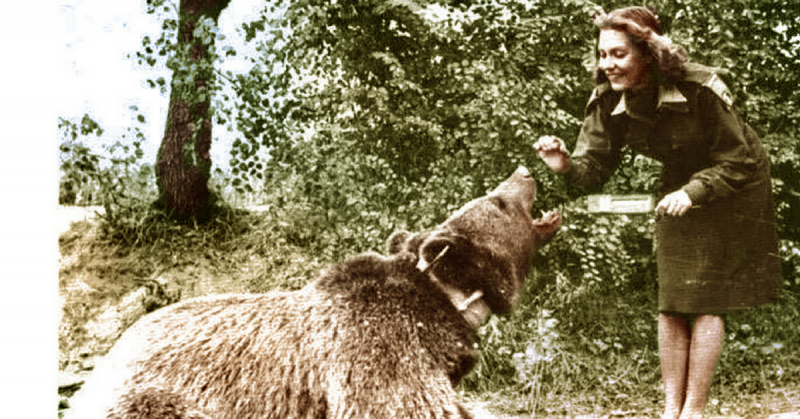After Germany attacked the USSR during World War II, Joseph Stalin restored diplomatic relations with Poland at the request of the Allies. Under the terms of the May-Sikorsky Treaty, Polish soldiers were released from Soviet camps and were allowed to reunite under the command of General Władysław Albert Anders.
Subsequently, the former Polish II Corps, which received the unofficial name of “Anders Army,” left the Soviet Union to join the Allied forces.
In 1942, while in Iran, Polish soldiers met a boy who was carrying an orphaned bear cub. The soldiers offered to buy the cub in exchange for a can of food, chocolate, a pocketknife, and some money. After the purchase, they called the bear cub the Polish name “Wojtek,” which is short for “Wojciech” and means “smiling warrior.”
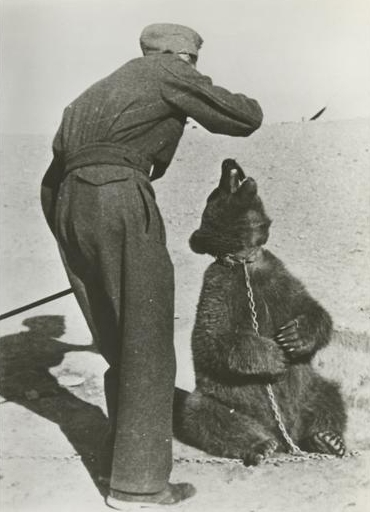
The cub was so small that it could not eat independently or normally swallow food, so the soldiers fed it themselves from an improvised nipple. To stay warm, Wojtek slept on the chest of a soldier named Piotr (Peter), who taught him military greetings and played with him.
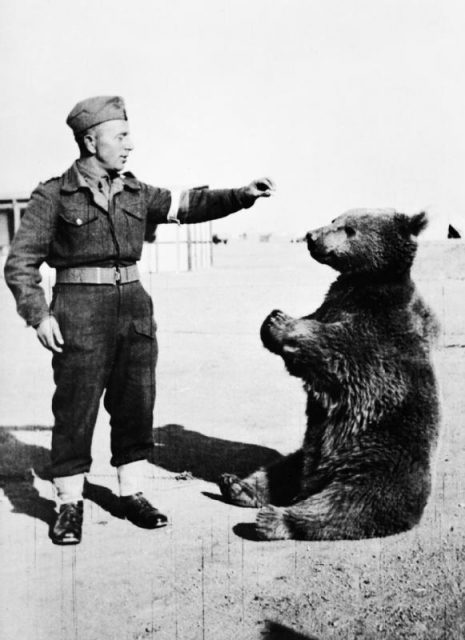
As Wojtek grew, he was formally accepted into the 22nd Artillery Supply Company. He became a mascot for this company, with his own personal number and an official rank of private, and would later become a corporal of artillery. Over time, Wojtek learned to stand guard, and in his spare time he playfully scuffled around with the soldiers.
Archibald Brown, a courier for General Montgomery, recalled, “He adored fights with other soldiers and even fought with four opponents at the same time. He hid his claws and skated with them on the floor, braked them and pretended that he was going to bite. But he never offended anyone.”
The military bear also acquired some bad habits: he loved sweets, drinking beer, and eating cigarettes.
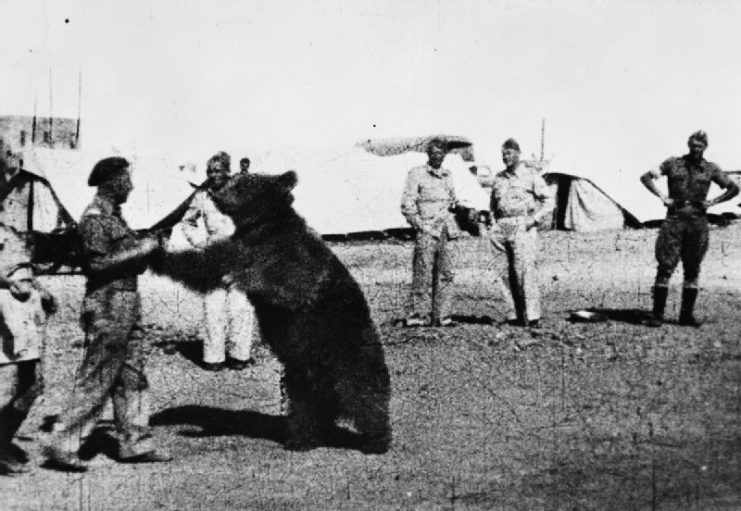
Soon the Anders Army was transferred from Iran to Palestine, then to North Africa, and then to Italy where they joined the allied forces taking part in the Italian campaign. Wojciech Narębski, who served with Wojtek in the 22nd Company, remembered, “It was strictly forbidden to transport animals, but Wojtek was already so famous and so popular that we had no problems with [his] transportation.”
After arriving in Italy in 1944, the Anders Army was sent to storm the line of German fortifications near Monte Cassino. However, the attack was impossible to carry out without first shelling the German line. Polish artillery actively shelled this area and were in dire need of constant cartloads of shells.
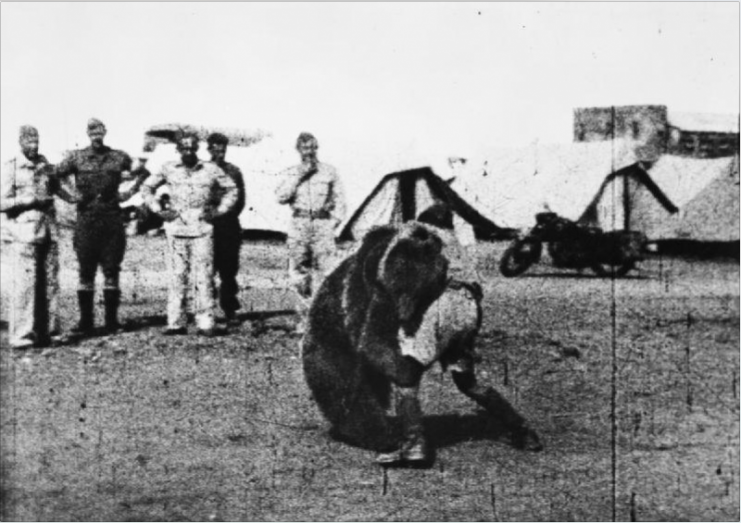
Soldiers of the 22nd Company helped transport shells, which is how Wojtek became even more famous. According to one version, a tired soldier appealed to Wojtek to take a box of ammunition–upon which the bear stood on its hind legs, took the box, and carried it to the nearest gun. After that, Wojtek returned to the truck and continued to transport more boxes. According to another version, the initiative of help came from Wojtek himself.
Nevertheless, from that moment on he became one of the most effective porters of shells in his company. The image of Wojtek carrying a projectile became the emblem of the 22nd Company. The legend of the bear who carried shells while under fire soon became known to many of the troops involved in the Italian campaign.
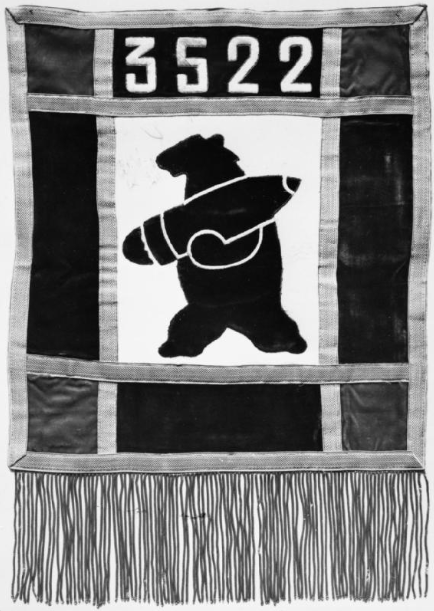
After the Battle of Monte Cassino, the Yalta Conference was held, during which the leaders of the USSR, the United States, and Great Britain resolved questions on the establishment of the post-war world order. One of the most controversial topics was the “Polish Question.”
Jozef Mojden (Юзеф Можджень), a former Anders Army soldier, shared his memories of that time: “The government in exile again lost recognition, so five years in constant fear of being killed, risking their lives for free Poland, went to waste. It became clear that Poland was not free, our struggle was in vain.”
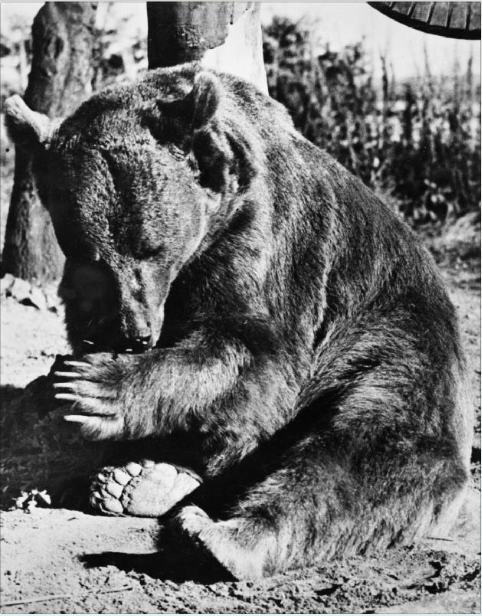
In 1945, units of the Anders Army could not return to Poland without fearing for their freedom. General Anders spent the rest of his life in exile, and in 1946, the Communist government deprived him of his Polish citizenship and military rank. Many Poles remained in the United Kingdom after the corps was disbanded.
After the war, Wojtek lived for a time with several of the former Anders Army soldiers in the village of Hatton near the town of Duns. He was eventually taken to the zoo in Edinburgh, where the fighting bear became popular with local residents. However, Wojtek’s caretakers and the zoo agreed that after Poland gained independence, Wojtek should be sent back to Poland.
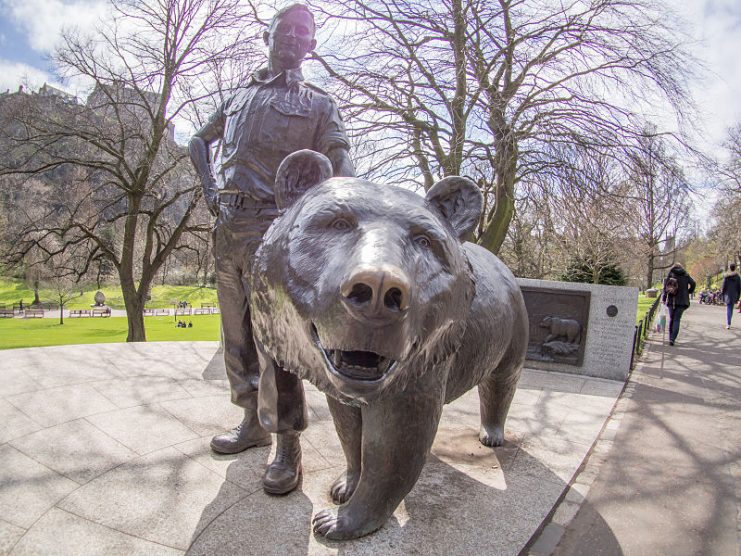
In 1963, at the age of 22, Wojtek died. Years of life in captivity affected his psychological health. The bear was no longer friendly, as his brothers-in-arms observed when they came to visit him.
Wojciech Narębski reflected, “The fate of Wojtek was very similar to the fate of many Polish soldiers. Many of our soldiers also lost all their relatives, they were orphans, so our bear was an orphan among orphans. Maybe that is why we got along so well?”
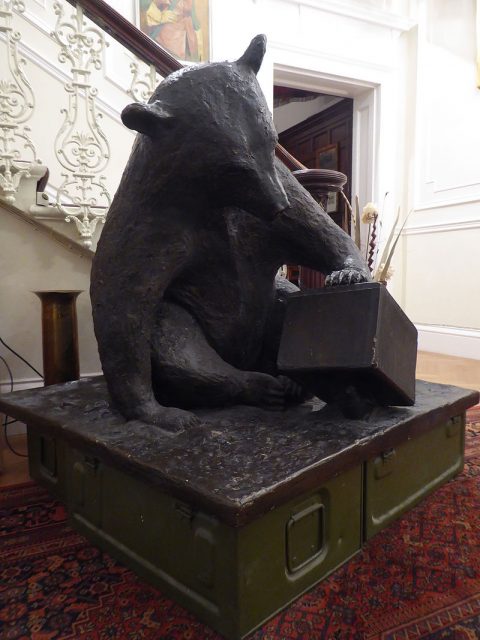
Read another story from us: Meet Chief Dog Sinbad, The Cheerful and Brave Coast Guard Mascot of WW2
Several memorial plaques were erected in honor of Wojtek–at the Edinburgh Zoo, the Imperial War Museum, and the Canadian War Museum in Ottawa. A sculpture of the bear-soldier is in the Museum of Sikorski in London. In addition, Wojtek lives on in the book Wojtek – Bear Soldier, songs, and some documentary films including Wojtek: The Bear That Went to War.
